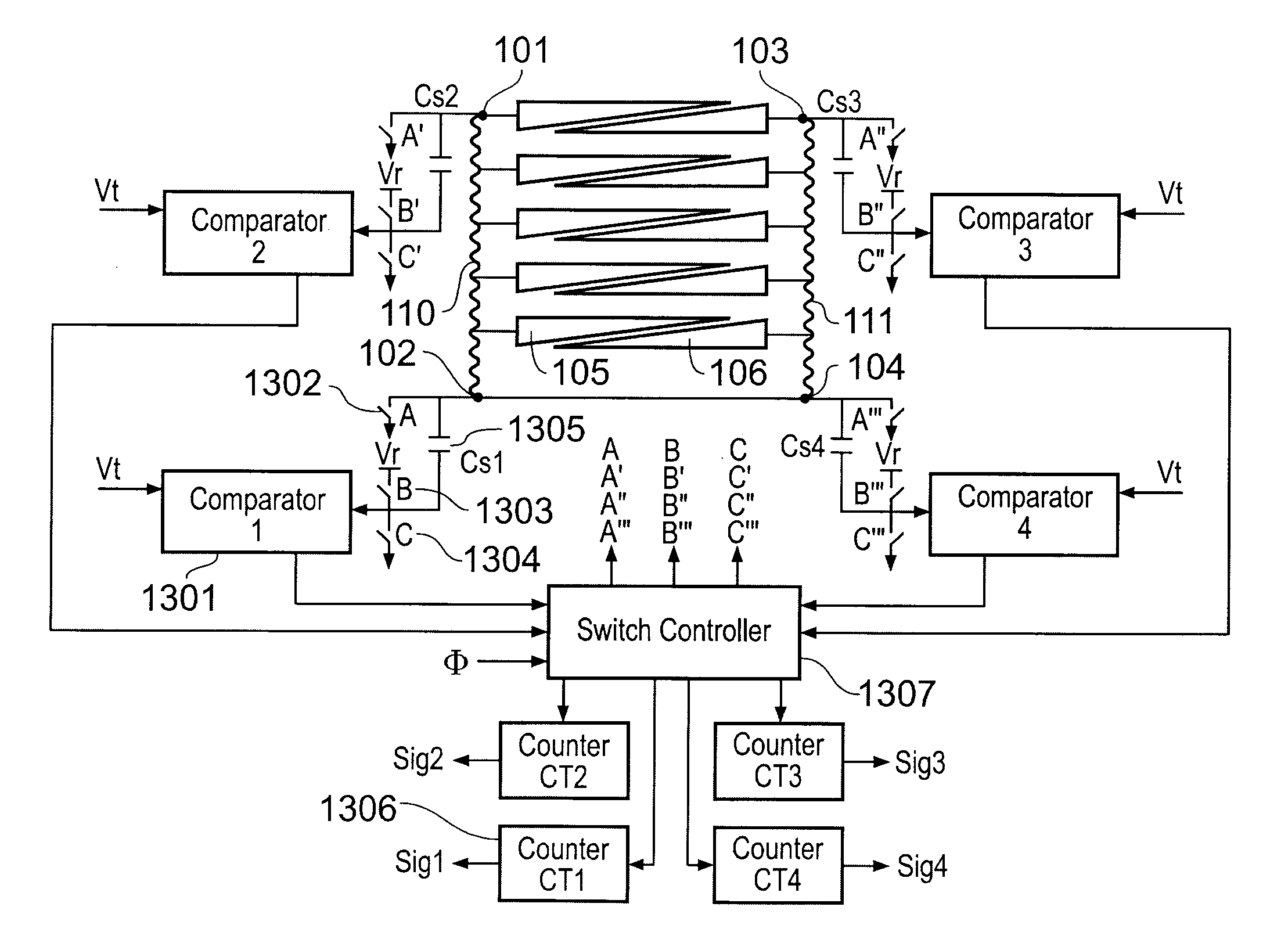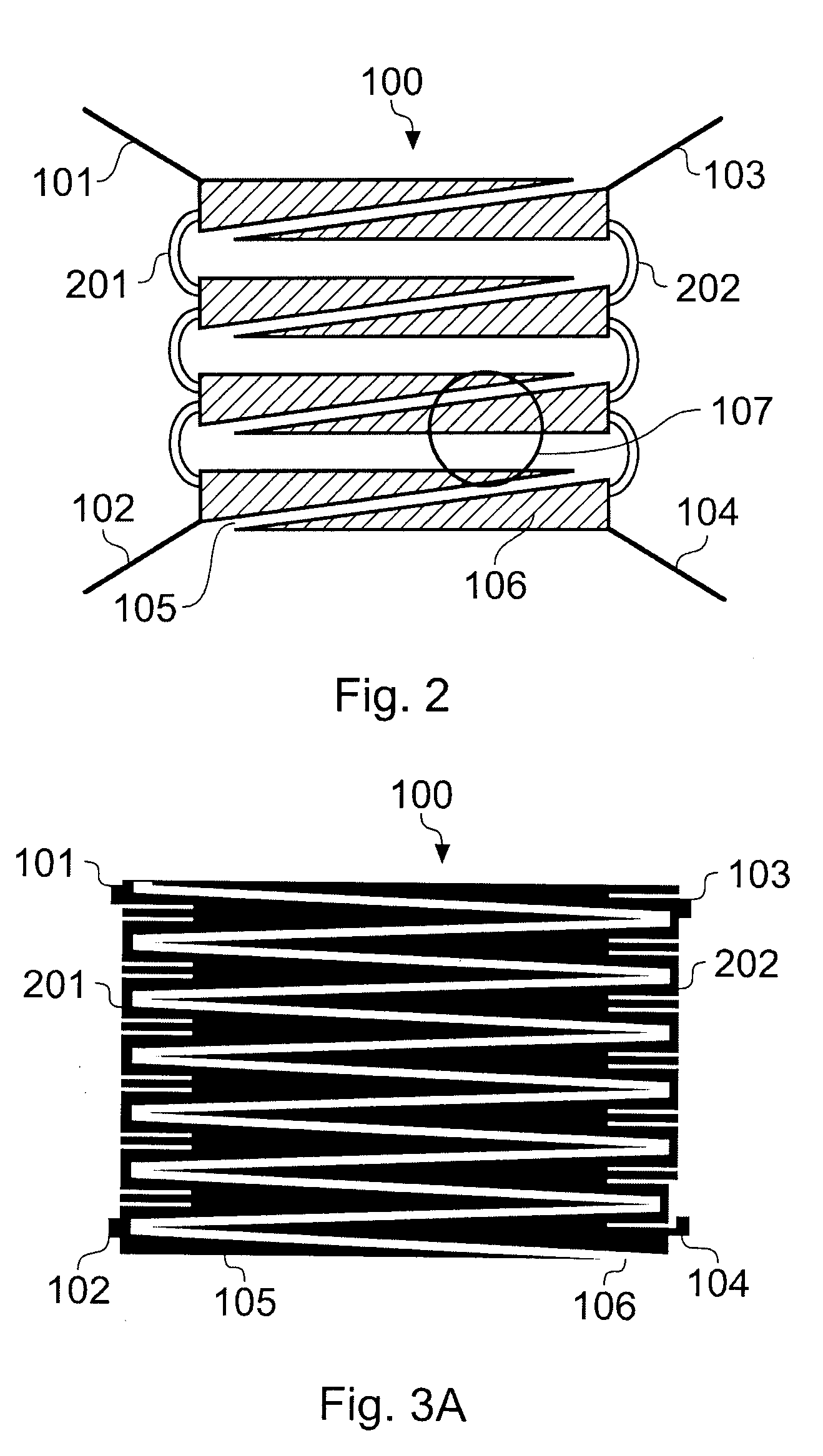Hybrid Capacitive Touch Screen Element
a capacitive touch and touch screen technology, applied in the direction of instruments, electric digital data processing, input/output process of data processing, etc., can solve the problems of increasing construction costs, reducing transparency, and difficulty in scaling up the screen size, and achieves low power consumption, high reliability, and simple wiring requirements
- Summary
- Abstract
- Description
- Claims
- Application Information
AI Technical Summary
Benefits of technology
Problems solved by technology
Method used
Image
Examples
Embodiment Construction
[0052]Referring to the drawings, FIGS. 1a, 1b illustrate a 2DCT sensing element 100 embodying the invention with four connection electrodes 101, 102, 103, 104 at respective corners of the sensing element. The electrodes 101-104 are connected to a sensing circuit (not shown). On the left and right sides of the sensing element 100 are shown respective resistive elements 110, 111 which connect between electrodes 101 and 102 and electrodes 103 and 104 respectively. Within the sensing region are two distinct sets of triangulated conductive shapes, one set 105 being connected to resistive side 110 and the other set 106 connected to resistive side 111. The triangulated shapes are interleaved so as to provide a left-right field gradient; in use, a finger running from the left side to the right side of the sensing element would naturally induce a capacitance gradation which can be measured on electrodes 101-104 in such a way as to allow a determination of horizontal position using ratiometri...
PUM
 Login to View More
Login to View More Abstract
Description
Claims
Application Information
 Login to View More
Login to View More - R&D
- Intellectual Property
- Life Sciences
- Materials
- Tech Scout
- Unparalleled Data Quality
- Higher Quality Content
- 60% Fewer Hallucinations
Browse by: Latest US Patents, China's latest patents, Technical Efficacy Thesaurus, Application Domain, Technology Topic, Popular Technical Reports.
© 2025 PatSnap. All rights reserved.Legal|Privacy policy|Modern Slavery Act Transparency Statement|Sitemap|About US| Contact US: help@patsnap.com



